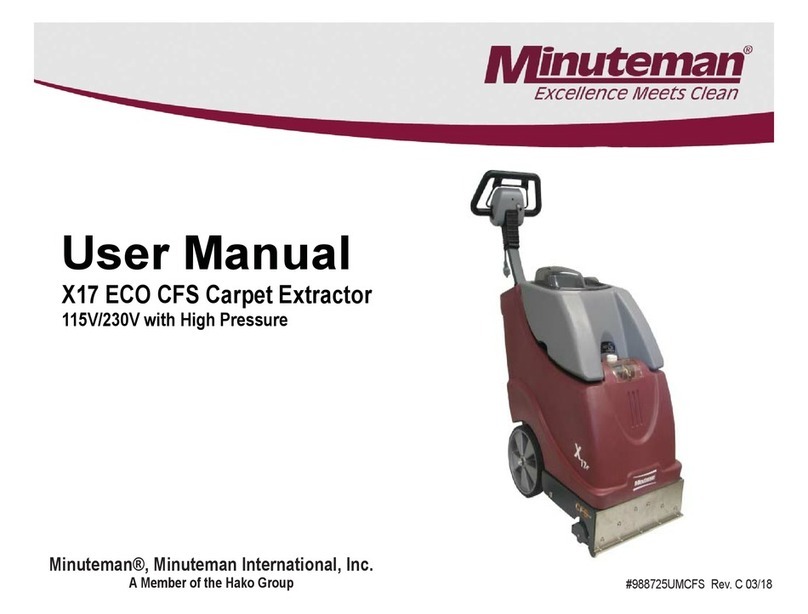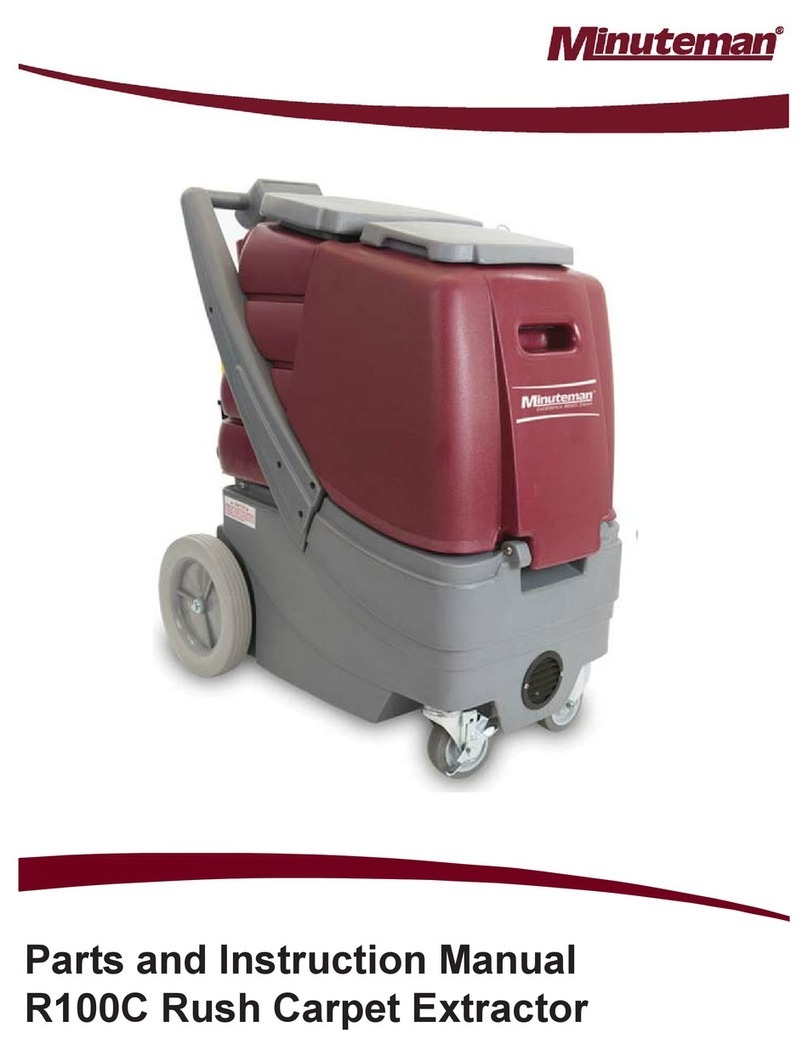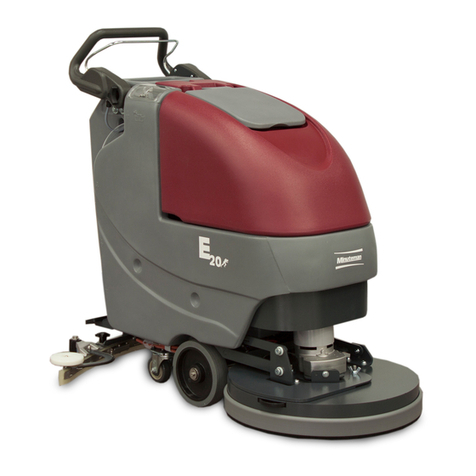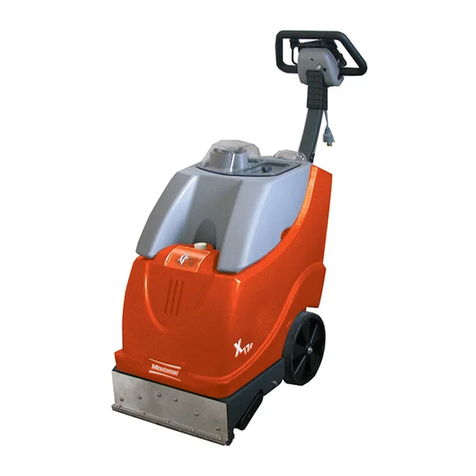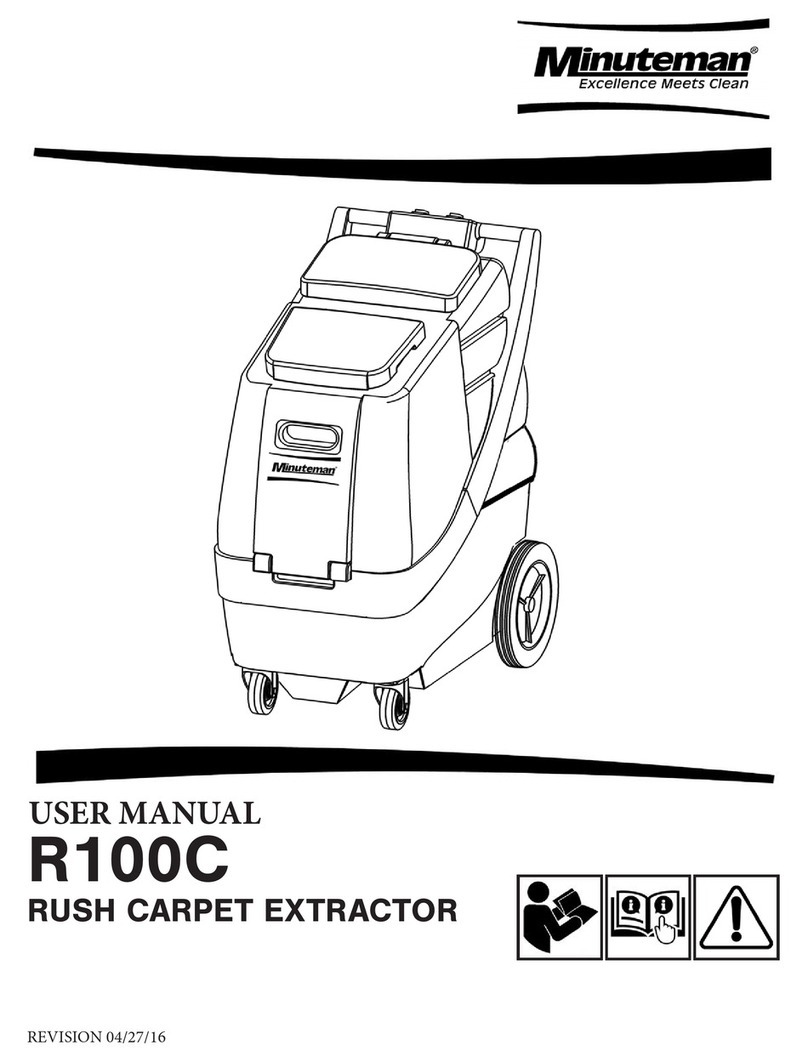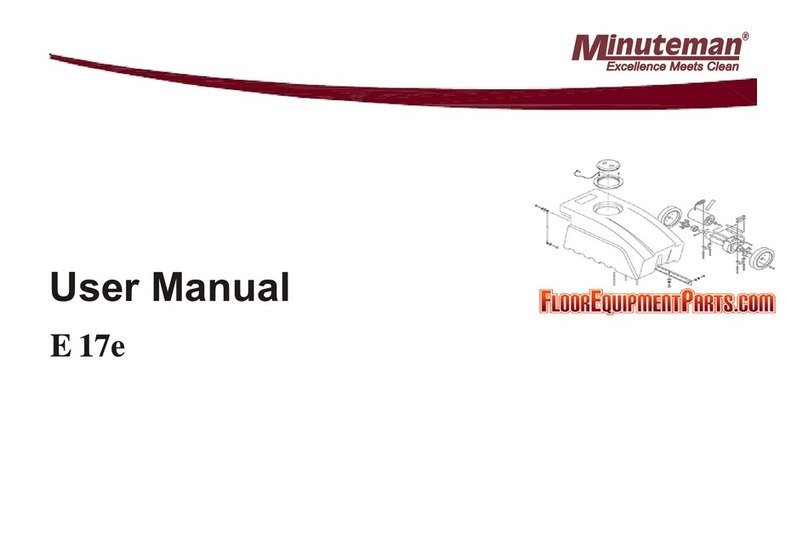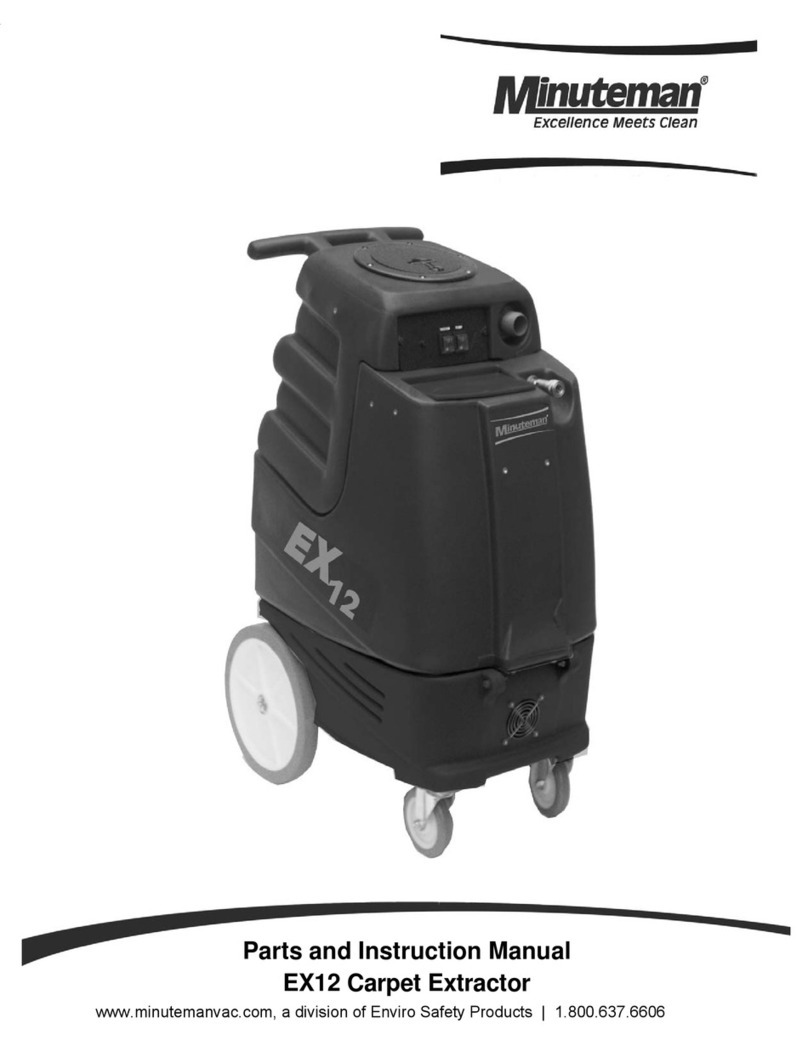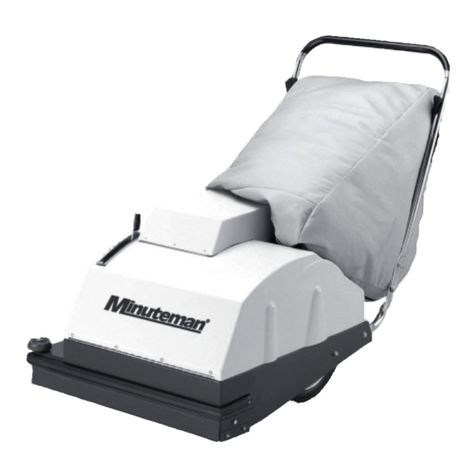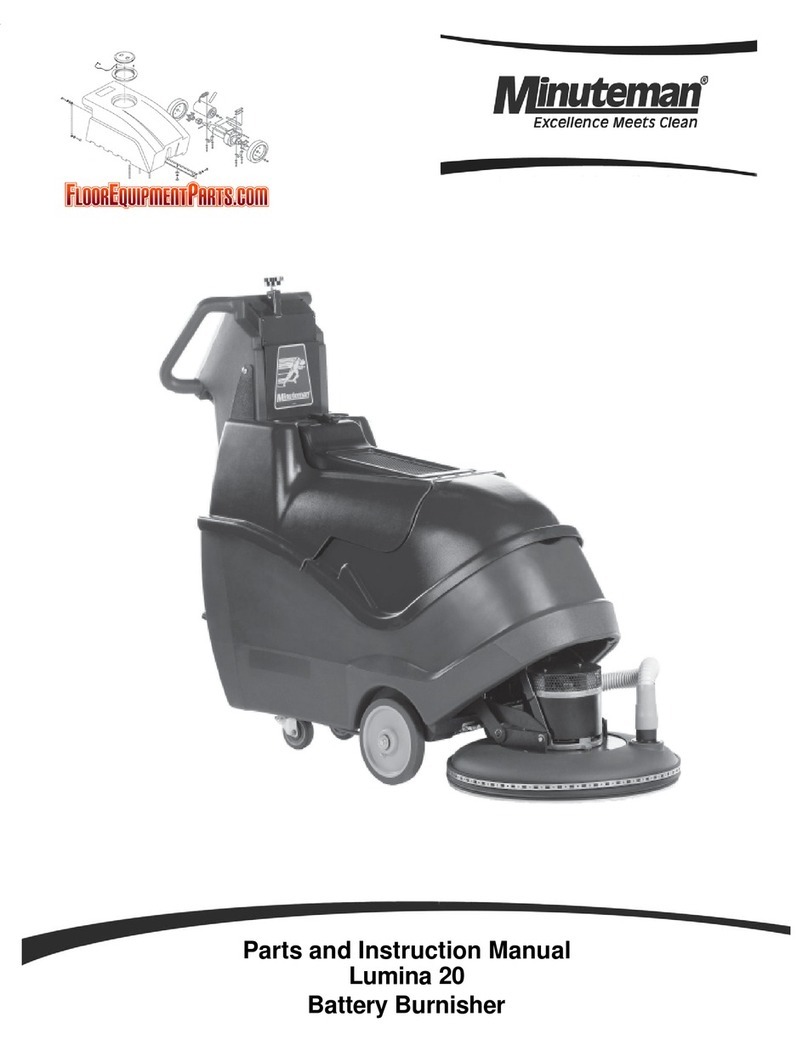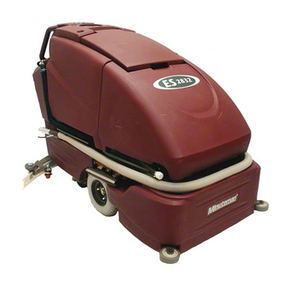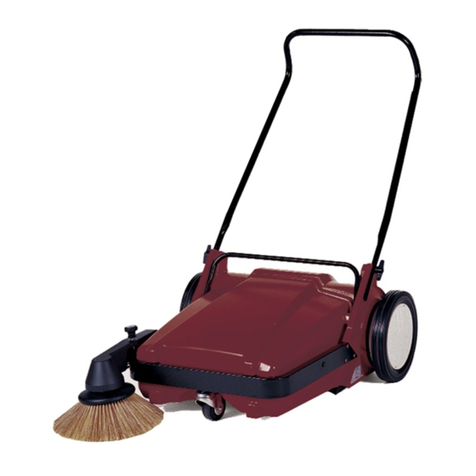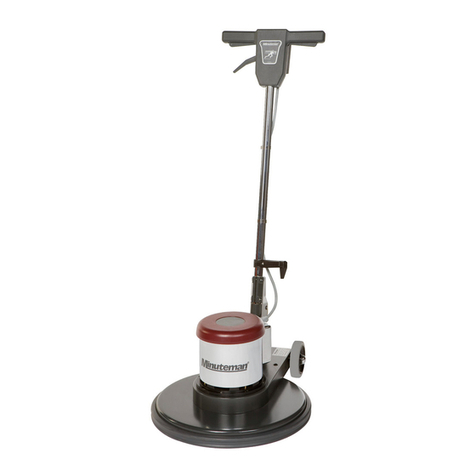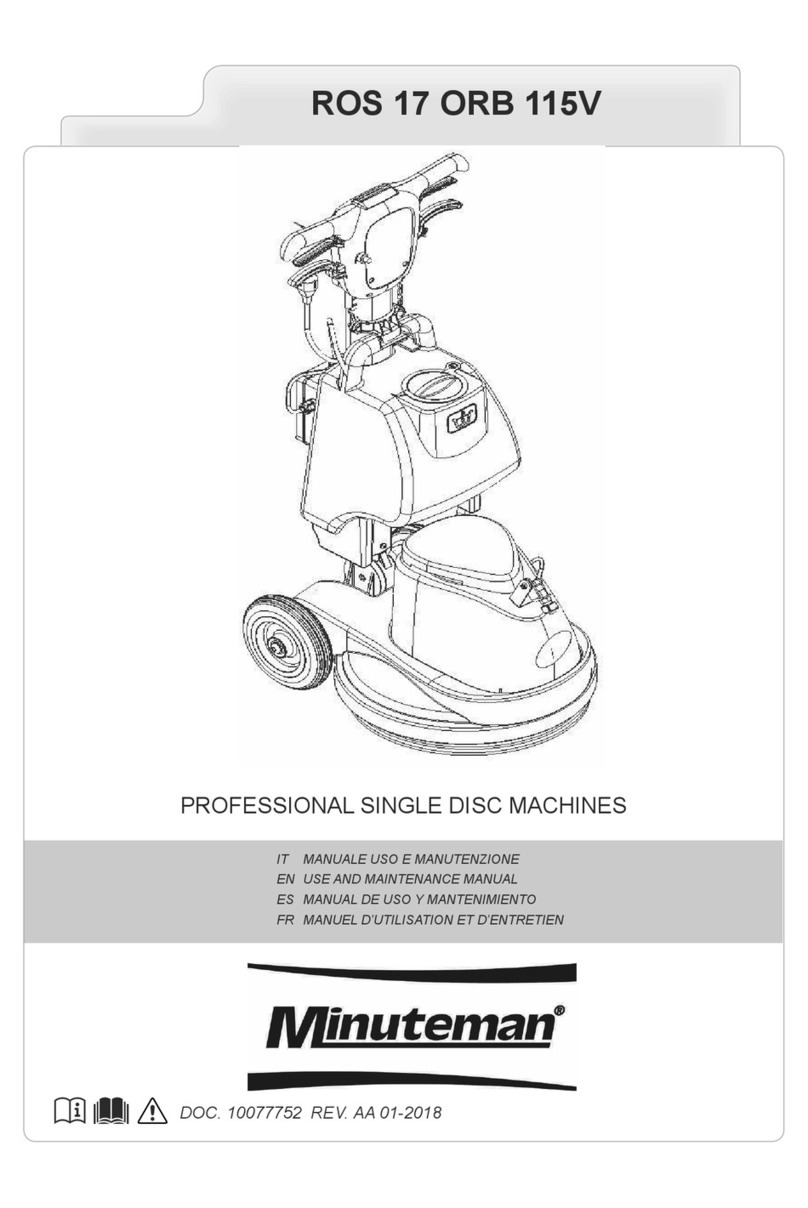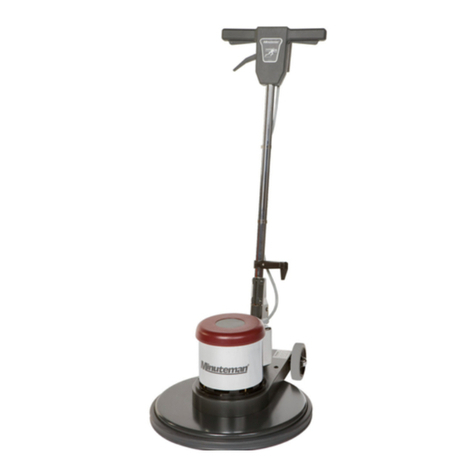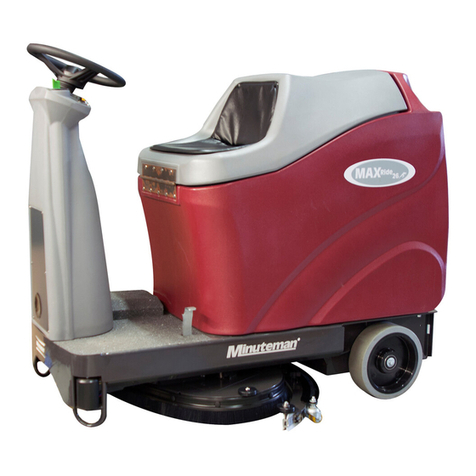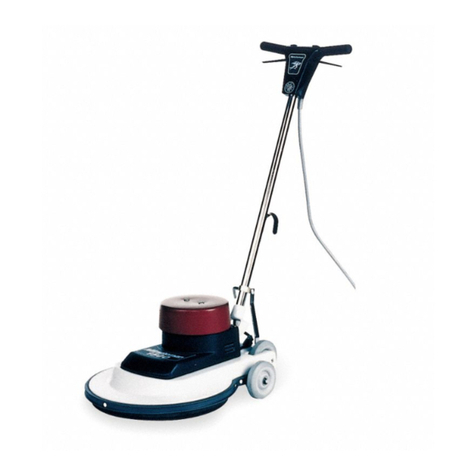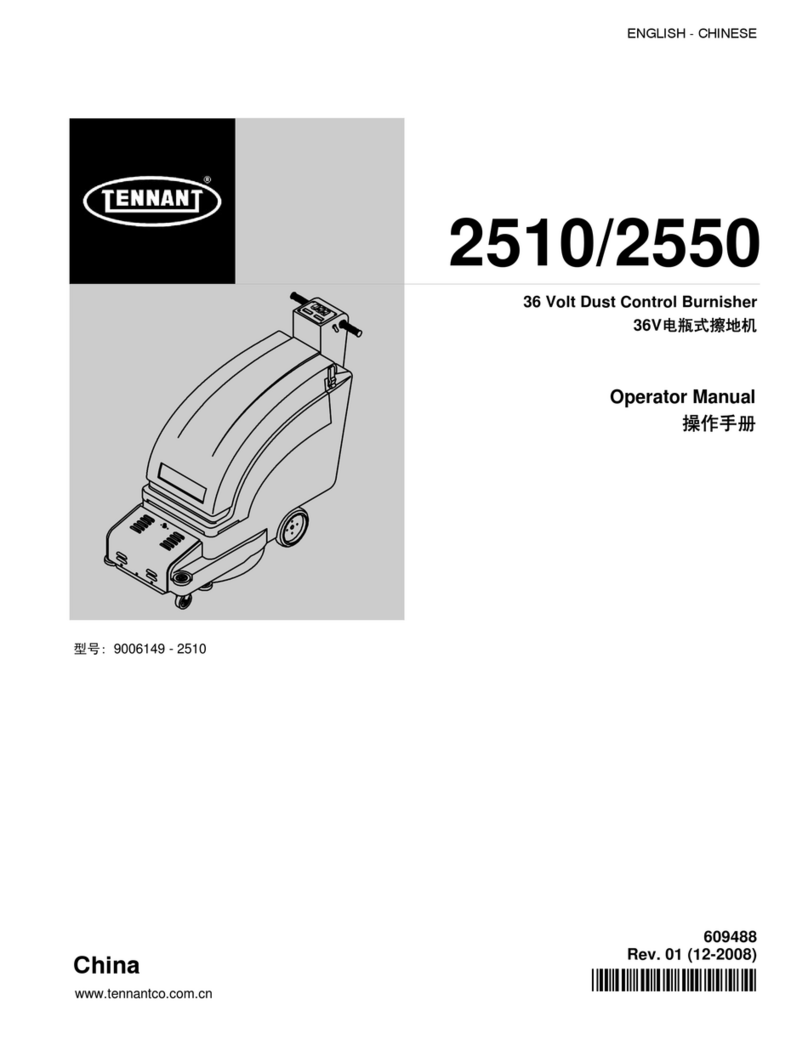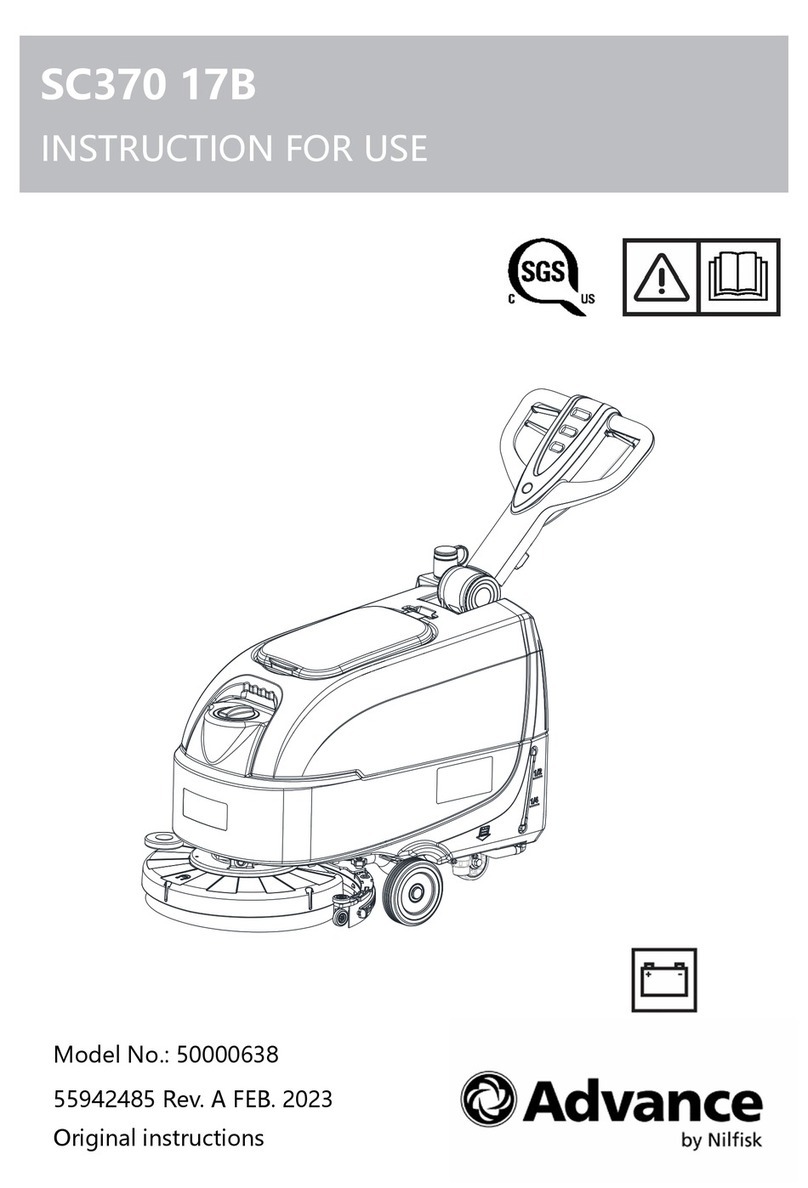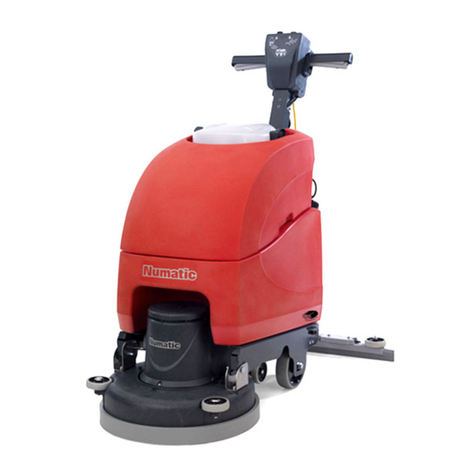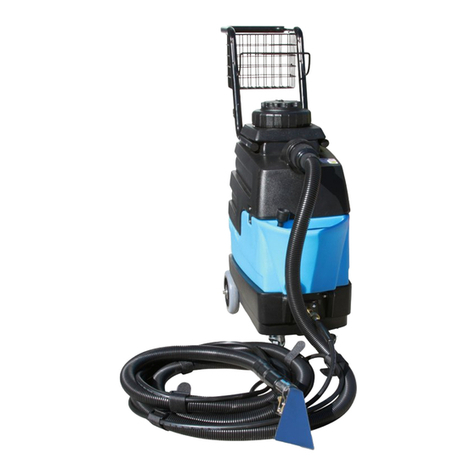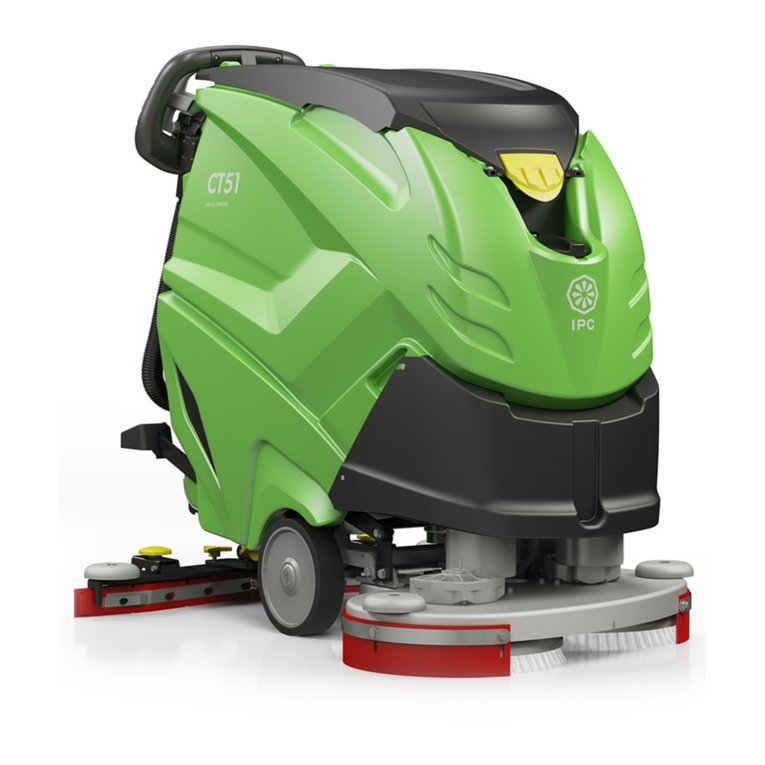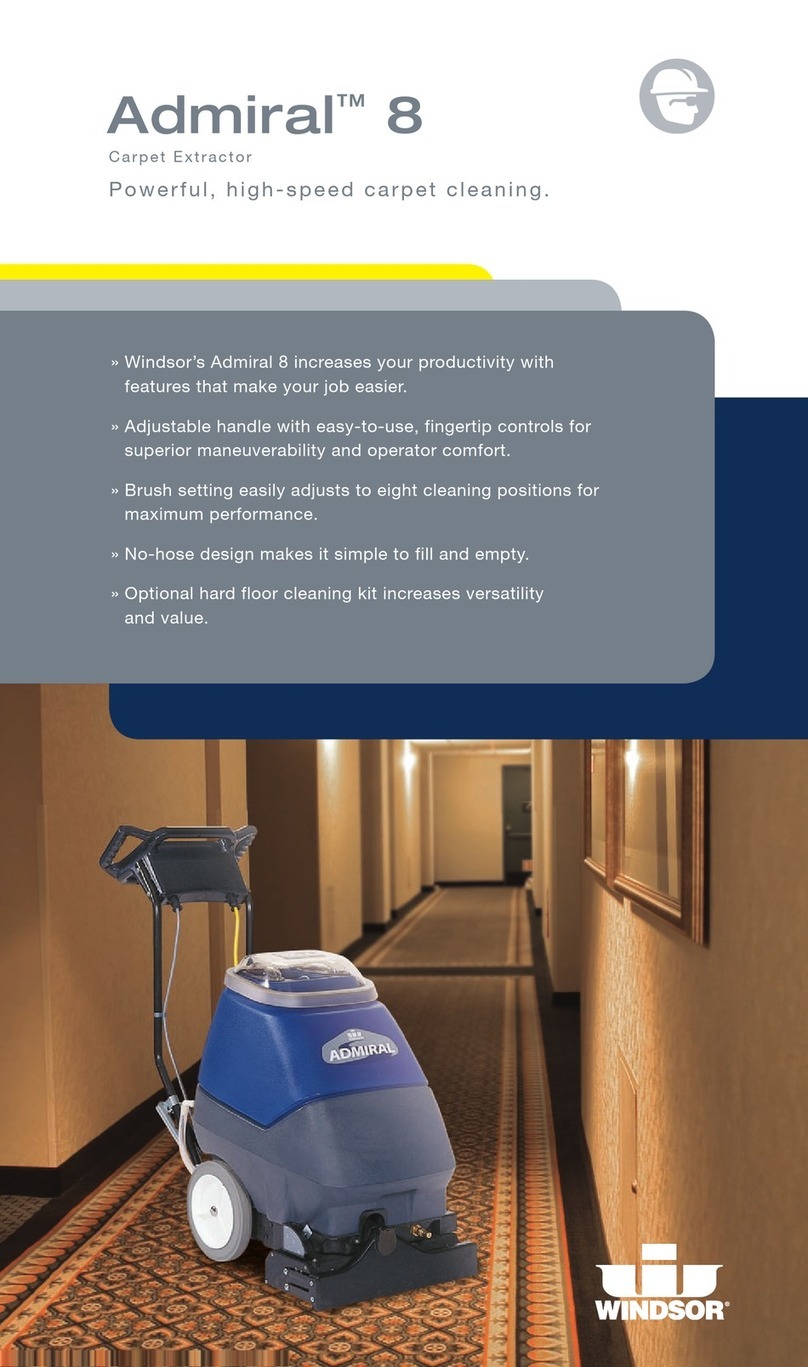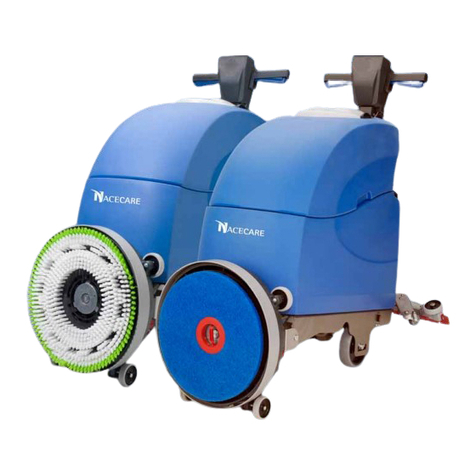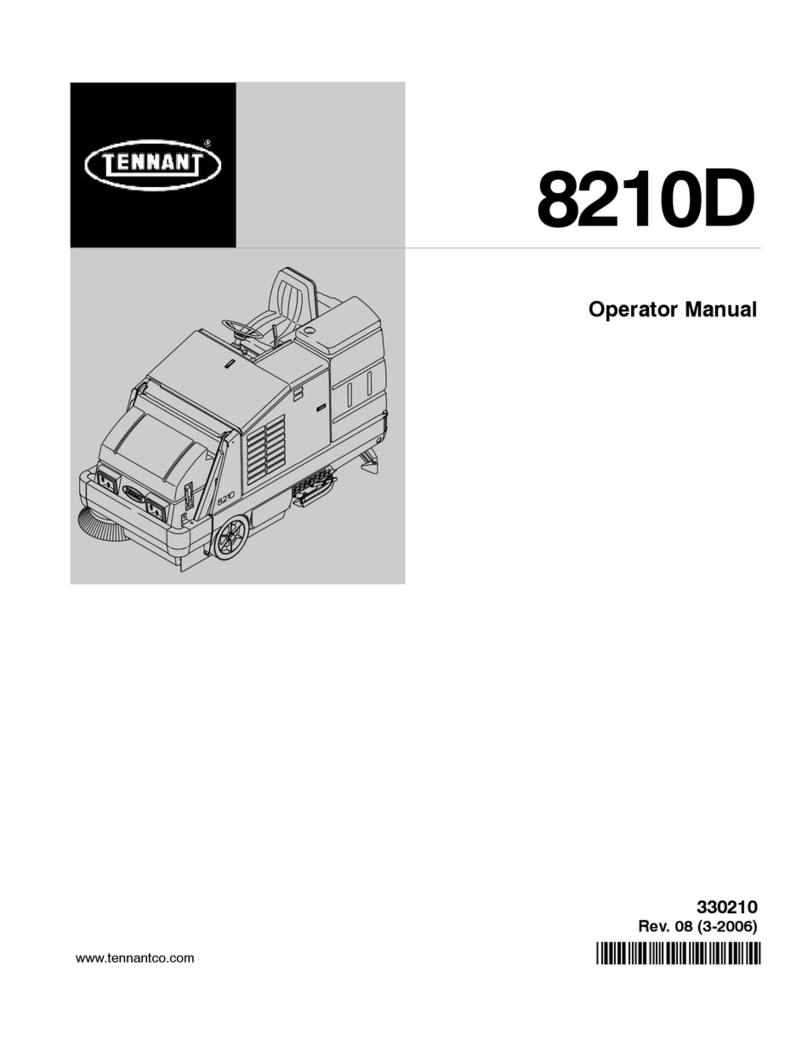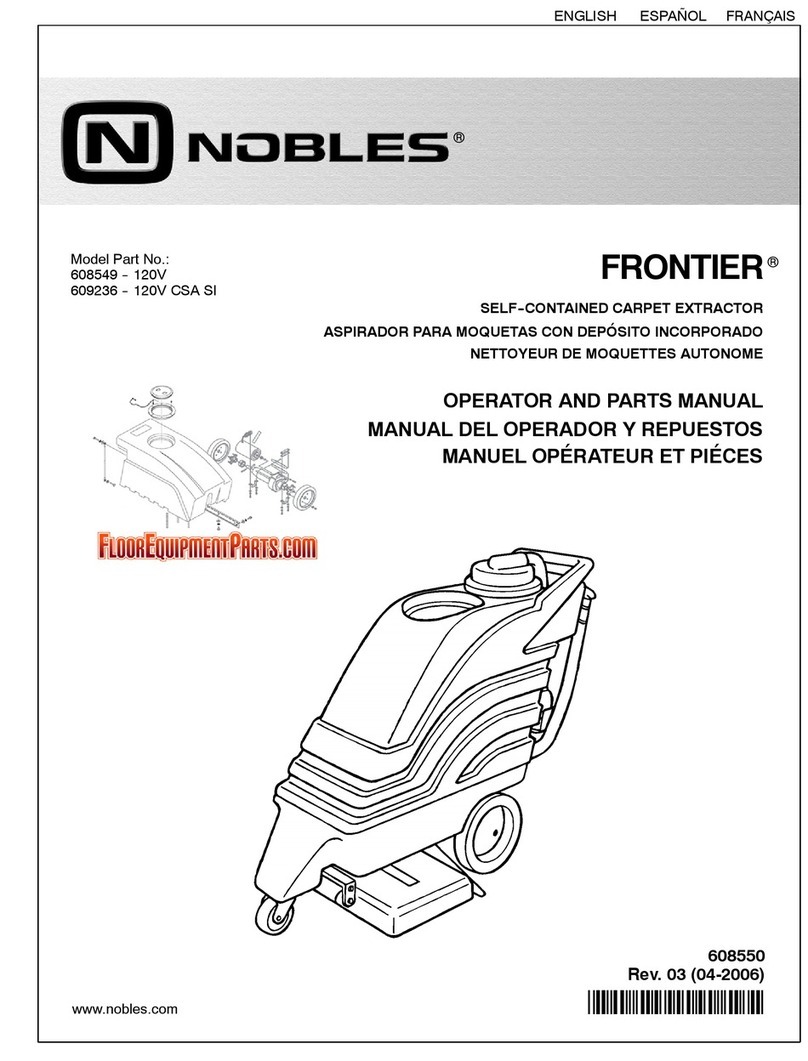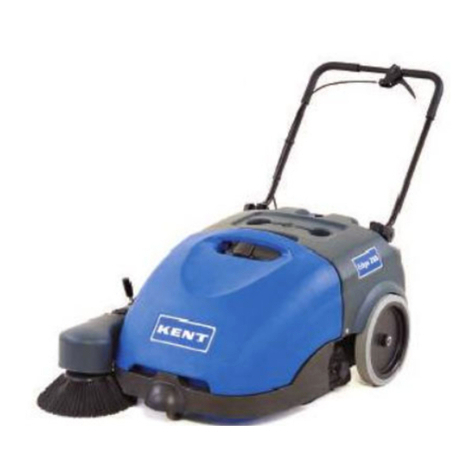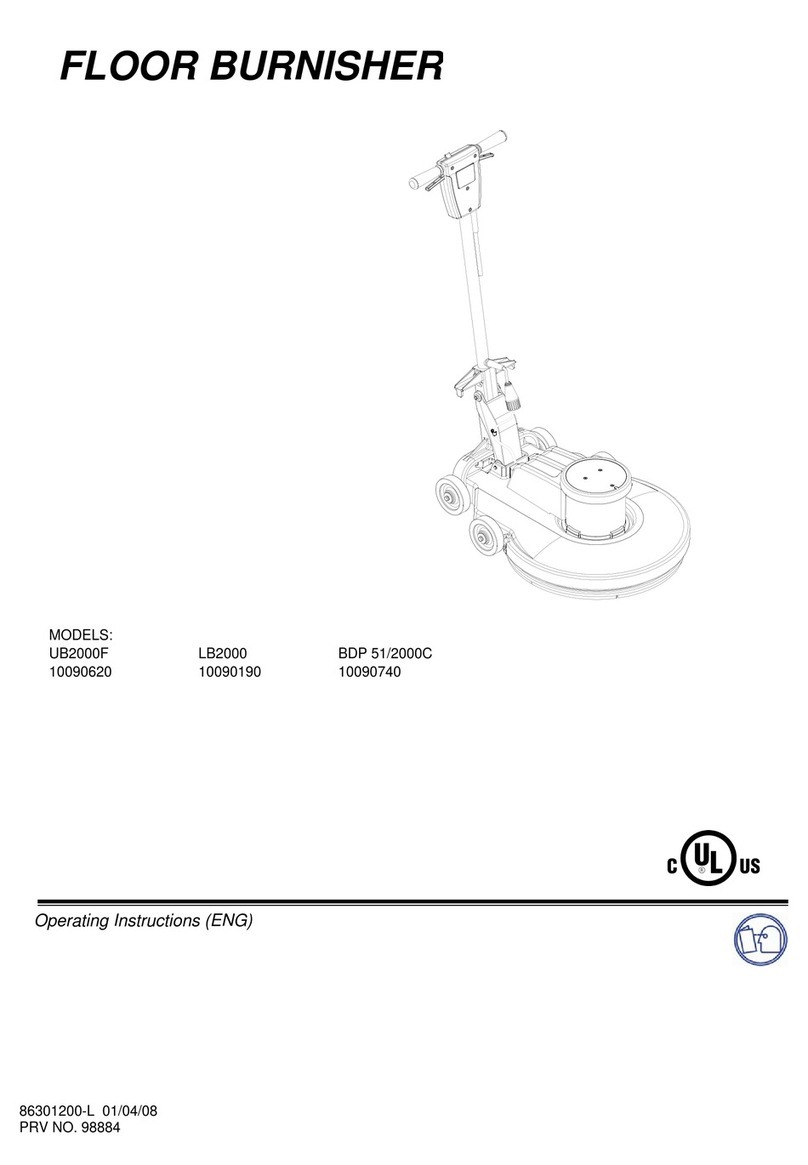
6
PROPANE BURNISHER SET-UP
STARTING AND OPERATION PROCEDURE
CAUTION: NEVER ALLOW MACHINE TO RUN FOR MORE THAN
10 SECONDS IN ONE SPOT OR DAMAGE WILL OCCUR TO
THE FLOOR!
1. Check oil and fuel levels. Make sure oil and propane tank
is not overfilled.
2. Check and clean recoil dust filter and carburetor filter.
Make sure air filter is free of dust and debris. Never run
buffer for more than 1 hour without cleaning air filter.
Change filters when necessary.
3. Check pad and pad assembly, to make sure pad is
centered and clean, and look for any problems with pad
driver. To do this turn machine over on its right side.
4. Check belt tension, again turn machine over on its right
side and squeeze belt together. Belt should depress
between 1/4 and 1/2 inch. To change see maintenance
instructions. (Page 13)
5. Open propane service valve, turn counter-clockwise to
open.
6. Tilt machine backward with pad off the floor, move throttle
to SLOW/IDLE position. Never start machine with pad on
the floor.
7. With Battery start machine, turn the key-switch to the start
position for approximately 5 seconds. If machine fails to
start, return ignition switch to the run position, do not turn
off. Allow approximately 30 seconds between tries, never
engage starter more than 10 seconds at a time.
a. Never start buffer with pad on the floor, this will
cause the starter to burn out prematurely!
b. Never use starting fluids or any other forms of
flammable substance to assist the engine in
starting!
8. Allow engine to warm up and run at normal operating
speed before engaging pad with floor. Make sure pad is
off the floor before engaging the clutch. Once machine is
at normal operating speed and clutch is engaged, start
walking and slowly lower the machine to the floor and
begin burnishing the floor. NOTE: Catalytic mufflers work
more efficiently when they are hot, emissions may be
higher when muffler is cold. Direct drive machines have
no clutch. Pad is moving when engine starts. Once
engine starts you are ready to burnish.
9. Machines with mechanical clutches: NOTE: Never engage
clutch with pad on floor. Once machine has reached
normal operating speed clutch is engaged automatically
at 2400 engine RPM and start burnishing. Start burnishing
when pad has reached top speed.
10. Always burnish on the right hand, so exhaust fumes are
blown to the inside of the aisle. Be careful exhaust fumes
and muffler are extremely hot and will damage
merchandise. NOTE: Do not expose skin to muffler or
manifold - extreme heat, will burn.
11. For normal stops of the machine, turn propane service
valve clockwise, to starve the engine of its fuel. Do not
stop machine by using the throttle or ignition key, you can
trap fuel in the lines, which can cause a backfire and cause
damage to the engine. NOTE: In case of emergency
always turn ignition key off. NOTE: Machines without
clutch, the pad starts to rotate immediately when engine
starts. Pad stops rotating when engine is off! No clutch!
CHECK OIL
Refer to engine manual for the type of oil, and instructions for
checking oil. It is important to note engine manufacturers differ
in the way oil is checked. Add oil if needed. Refer to Page 12.
HANDLE ADJUSTMENT
Adjust handle by loosening wing nuts on each side of handle.
Rotate handle to desired position and reinstall wing nuts.
PROPANE TANK INSTALLATION
Buffer is supplied with 20 lb., 5 gallon capacity D.O.T. and U.L.
listed tank. DO NOT OVERFILL. Overfilling will cause regulator
to freeze. This could cause damage to your equipment. Hold
tank in place by clamping the toggle assembly to the tank
band around the tank. Adjustments to the toggle assembly are
made by screwing toggle in or out on the toggle clamp. Connect
fuel hose to the tank valve by turning coupling to the right
(clockwise). Hand tighten only, making sure not to cross thread
the coupling.
REMOVING TANK
To loosen turn coupling to the left (counter clockwise). Undo
the tank strap, remove tank and store in approved area. Do not
store tank with machine in the janitor’s closet.
CONNECTING THE BATTERY (for battery start machines only)
Connect the RED positive cable first, then connect the black
negative cable last.
INSTALLATION/CHANGING PAD
1. With engine off, turn the machine over on the operator’s
RIGHT side (starter side) for the Briggs & Stratton models.
This can be easily done by pushing down on the right side
of the handle with some force while the machine is tilted
back.
2. Remove the center cup retainer and carefully pull old pad
off the pad driver assembly.
3. Inspect the pad holder for cracks or damage. Replace if
necessary. NOTE: A DAMAGED PAD HOLDER ROTATING
AT HIGH SPEEDS MAY BE AN EXTREME HAZARD IF IT
SHOULD COME APART.
4. Pull center from new pad, enter pad on pad holder and
secure with center cup retainer.
5. Press pad on to the pad driver assembly making sure
pad fits inside the lip of the pad driver assembly, to prevent
pad from elongating, attach center cup retainer.
6. Return machine to the upright position.
TRANSPORTATION
When transporting a propane powered floor machine with the
fuel cylinder attached, the cylinder should be securely fastened
with service valve closed and coupling not attached. The
machine should be secured to the vehicle to avoid movement.
Tanks separate from the machine should be secured to avoid
movement. NEVER STORE MACHINES WITH TANKS IN AN
ENCLOSED VAN OR TRAILER. ALWAYS CHECK TANKS FOR
OVERFILL BEFORE TRANSPORTATION.
